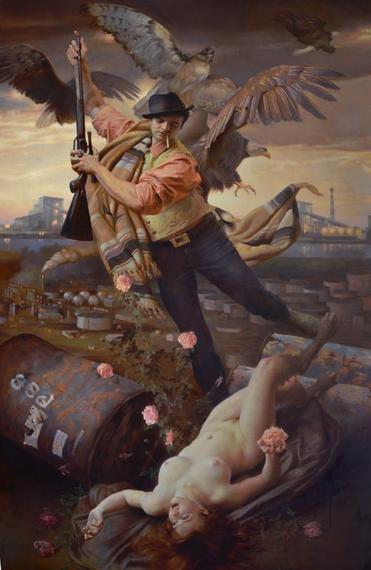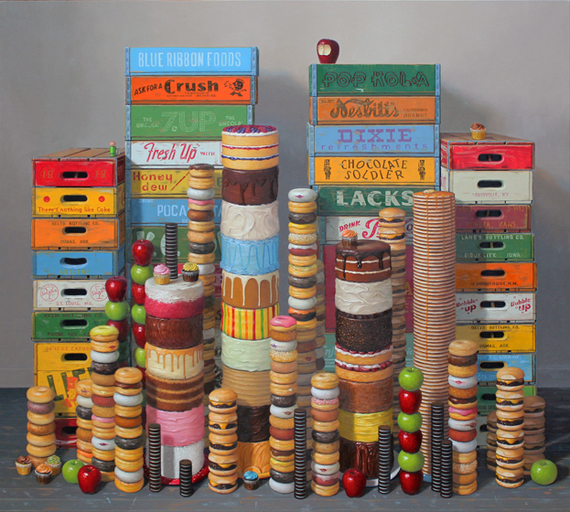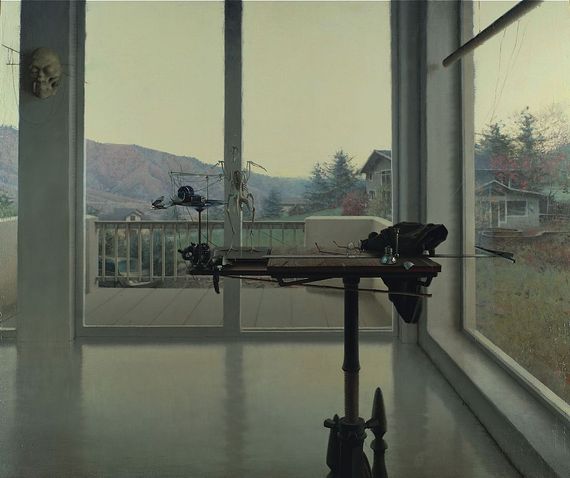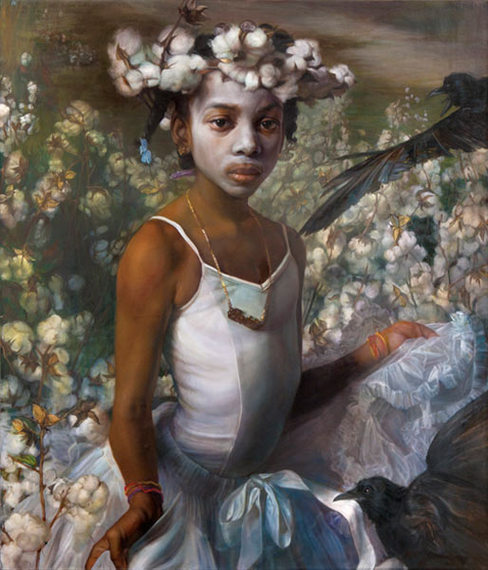When I asked Brooklyn figurative painter Adam Miller whether representational painting is still relevant in today's digital world, he gave me a surprising reply:
"The simple answer is no. And that is precisely its most disarming and powerful quality. We live in a culture of frantic events. We make money putting butts in seats and our society's major arts are those that exist primarily in time and not in space. Keynesian economics applied to art. You come, you see, you consume. Repeat ad nauseam. We have transformed art viewing into an event and this has confounded our ideas of what art is. It is now relevant to a market economy. How do you put a price on the facade of Notre Dame or the Loggia de Lanzi in Florence with all of it's sculptures? Time is not their measure and to sell tickets to them would disarm them of their potency. By celebrating glorious irrelevance we liberate ourselves from the tyranny of utilitarianism and group think. We stop being Sheeple and that is the best way I know to piss off all the right people."
One of the pluses of contemporary representational art is that great painters develop organically all over the world. There is no necessity to live and operate in a metropolitan art hub and be a part of the latest art trend. As artworld corruption and inanity smothers creativity in New York and Europe, artists like Robert Jackson can drive a successful career from a small town in Pennsylvania:
"As far as I understand, creativity should have no bounds. Representational painting is a very slow and thoughtful utterance and means of communication. New advances such as digital technology add to our human experiences but don't necessarily have to remove or negate our past appreciations. Just as synthesizers didn't eliminate a desire to hear acoustic music with the squeak of fingers across a fret, people find enjoyment in looking at the hard work and decision making that a painter displays on a canvas with all its successes and imperfections. An artist should be using whatever vehicle speaks to them personally. Representational painting is simply that means for me. I've found it an effective and satisfying way to speak to the viewers I want to reach."
Long considered Colorado's leading representational painter, Daniel Sprick recounts a pertinent incident:
"Years ago, a man and and his companion were leaving the exhibition of a 20th century master as I was entering it. He courteously opened the door for her and said, ''I know that artist was a genius, but sometimes I want to see paintings that you can tell are good just by looking at them.'' His tone was respectful and in earnest, without a trace of irony. At museums, the most compelling works for me tend to be Renaissance, Baroque, and 19th century paintings. They are usually painted beautifully, as though the artist believed in the importance of what he was doing. Beauty and transcendence in representational art are possible in our time as well. It can be soothing or it can be disturbing. It can have an unrestrained expression of beauty or it may present a violation of beauty. But if it is skillfully crafted and it gives the viewer sustenance, he doesn't have to walk out puzzled as to why the arbiters of taste deem it to represent the best of our time. If art works are good, you should know it just by looking at them."
Margaret Bowland, who lives and works in Brooklyn, New York, tries to instill in her students just what is is that makes a painting great:
"I teach in an art school and know that the major art form of which my students have a solid understanding is film. I talk to them about the way a particular film was lit, the color palette chosen, all concepts the cinematographer has learned in film school from old master paintings. Film makers understand that they are telling a visual story. The film maker seeks to control the viewer's response to his material. The students know this readily and can easily explicate the methods used. It is then my job to take them to a museum and to show them that the same thing is happening in great painting. But a painting holds still; it holds its center. A painting insists itself back upon us each and every time we see it. The metaphor the painter has created entwines itself into our lives. Our lives will change for we cannot stop time. Our apprehension of a painting will change as well, but these accumulated viewings of the art work through time will give our lives depth. Just as a shadow in a painting gives the figure represented corporal reality, the experience of living with a good painting gives our own life weight."
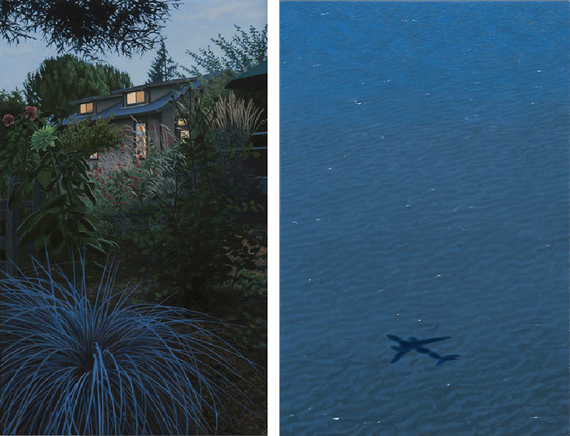
Sandra Mendelsohn Rubin, Studio in September, 2013, oil on polyester, 11 x 6 3/4 inches, and Landing at SFO, 2011-2012, oil on polyester, 13 1/2 x 9 inches.
Tucked away in her secluded Northern California home and studio, Sandra Mendelsohn Rubin has plenty of time to think about the importance of what she does on this planet:
"From the beginning of human history, making marks depicting the physical world has been a constant. Our ability to question the meaning and purpose of our existence is what differentiates us from other animal species. Representation in painting touches on this core human truth. It is as much a part of our existence as storytelling and poetry. No matter the subject or content - how complex or how minimal - representational painting incorporates the gift of a narrative. That being said, representation cannot stand alone. The true poetry lies in the orchestration of a good composition combined with the skillful use of paint and color, all driven by sensory perception, intuition and memory. No matter the time in history, when done masterfully, it is timeless. In daily life, we 'look' but we do not always 'see'. We are physical beings in a tactile three dimensional world. Representation makes us pay attention to our surroundings as well as to ideas and relationships. We all have a story to tell. It is my firm belief that representational painting will always be new no matter the trends or curatorial leanings of the times."
Predictions are that in less than three decades we humans will create a being that is superior to ourselves. The following day we will have to cope with our newfound status as a second tier intelligence. Some think that through biological and technological body enhancements we will be able to keep up with our competition, or that we will be able to somehow prevent the advent of our superior artificial creation. I doubt it. I think we are stuck with being us whatever the consequences are. As we enter this time of unimaginable and rapid change, representational painting offers the possibility of connecting with those parts of us that are most human, most necessary for a livable existence. For forty thousand years, long before mankind invented written language, we have put down marks that left a living trace of who we are, what we saw, and what we thought. We need those marks now more than ever before.

